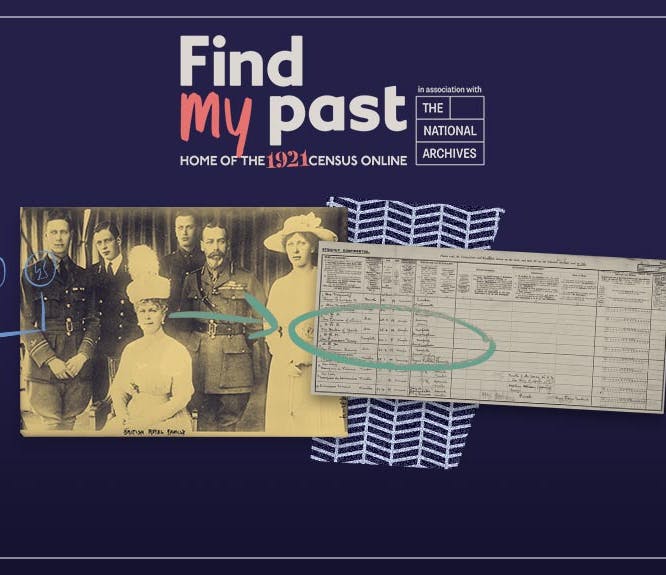Your go-to guide to understanding British Army regiments
4-5 minute read
By Paul Nixon | March 5, 2024
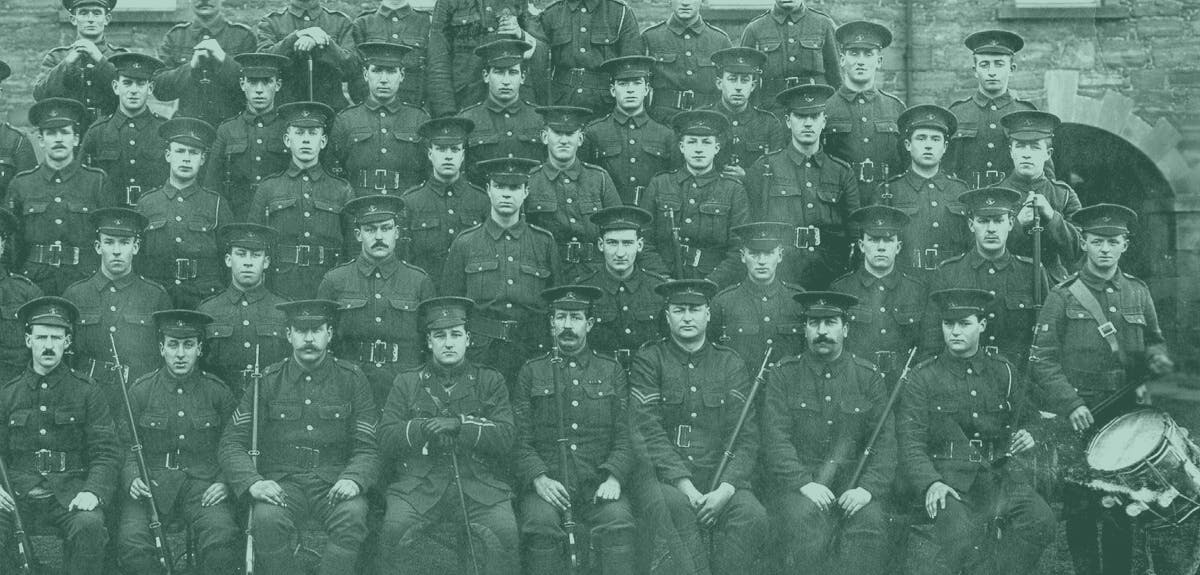
Ever gotten confused between the Special Reserve, the Extra Reserve, or the Regular Army Reserve? With so many regiments, battalions and ranks, we asked our in-house military expert Paul Nixon to break it down for us.
For the purpose of this article, I am going to concentrate on a British Army infantry regiment, The Essex Regiment, before and during World War 1.
In 1909 The Essex Regiment had two regular battalions of career soldiers: the 2nd Battalion stationed at the Curragh in Ireland and the 1st Battalion stationed overseas in Quetta, India (now Pakistan).

Soldiers of the Essex Regiment clearing snipers, found in our Photo Collection.
In the case of the Essex Regiment, the 2nd Battalion was the home battalion. New recruits, having been posted from the regimental depot in Warley, would fine-tune their soldiering there. When they were fit enough and with sufficient training under their belts, they would be sent to the overseas battalion.
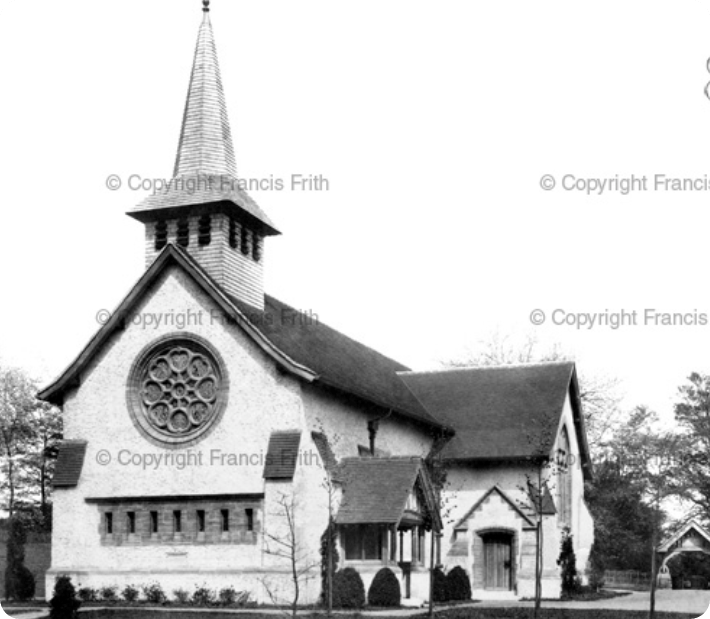
Great Warley's Parish Church of St Mary the Virgin, 1906, Francis Frith collection.
The Essex Regiment recruited most of its men from the county of Essex but in common with most other 'territorial' regiments, recruited nationally as well. Having attested for service, a man was issued with his regimental number at the Regimental Depot and would then spend up to three months training at the Depot before being posted to the home battalion.
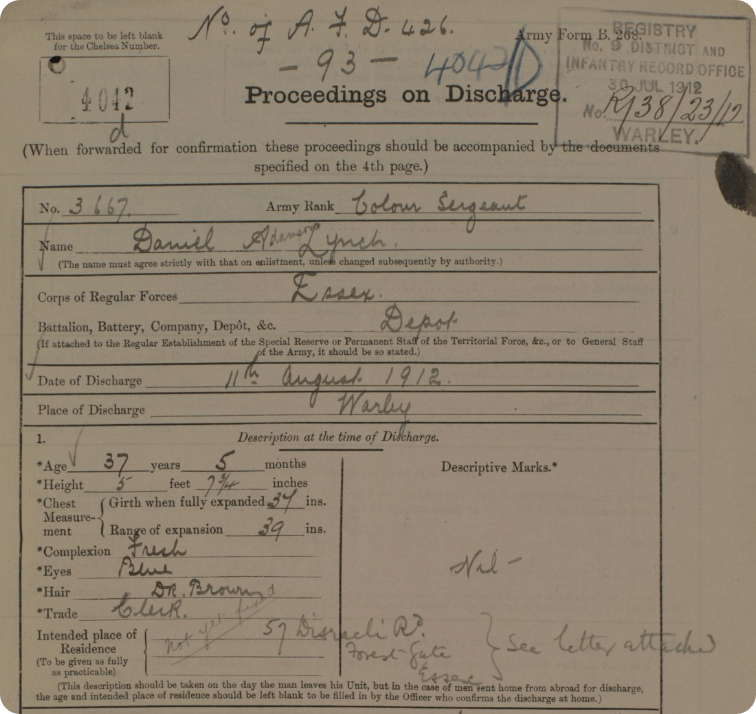
A 1912 discharge record from the Essex Regiment, from the Infantry Record Office, Warley. View this record here.
Some 18 months to two years later he would then be posted to the overseas battalion. His posting from the Depot to the 1st Battalion, and then from the 1st Battalion to the 2nd Battalion did not affect his regimental number which remained unchanged throughout.
Special Reserves
Also administered from the Regimental Depot were those men who had joined the Special Reserve or Extra Reserve. These battalions were a legacy of the militia which was disbanded in 1908, and each of these battalions had its own regimental numbering sequence.
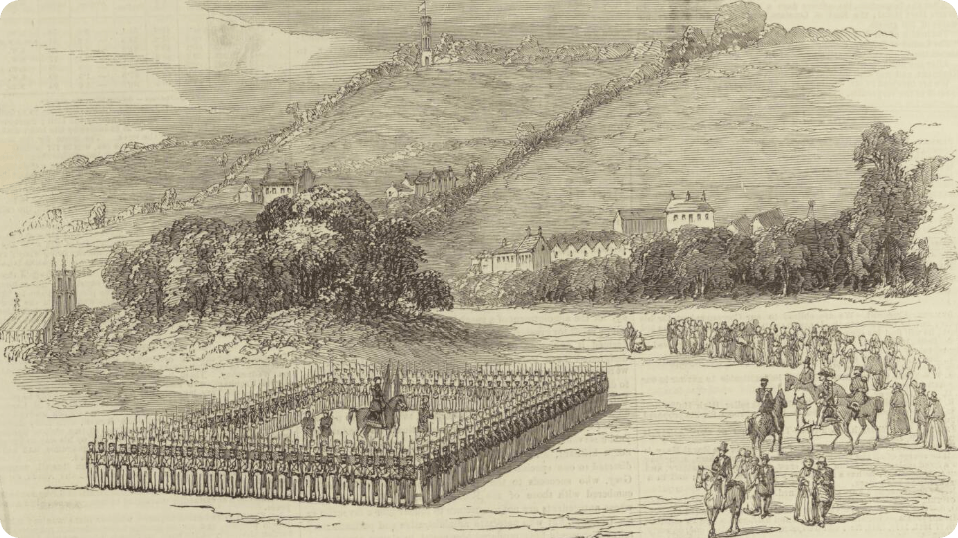
An inspection of the Second Royal Surrey Militia, as depicted in the Illustrated London News, 1854.
By 1909, the 3rd (Special Reserve) Battalion of the Essex Regiment was populated by men who had transferred across from the militia in 1908 and also by men newly joined since then. Like the militia before it, the Special Reserve and Extra Reserve gave men the opportunity to try their hand at soldiering but without the full-time commitment that soldiering required.
Note that the Special Reserve and Extra Reserve are not to be confused with the Regular Army Reserve. Both the Special Reserve and the Extra Reserve had their own regimental number series which were distinct from that of the regular battalions.
Territorial Force Battalions
In addition to the regular battalions and the Special and Extra Reserve Battalions, the Essex Regiment had five Territorial Force Battalions. Just as the Special and Extra Reserve battalions could trace their heritage back to the militia, so the Territorial Force, formed in April 1908, traced its origins back to the Volunteer Force.
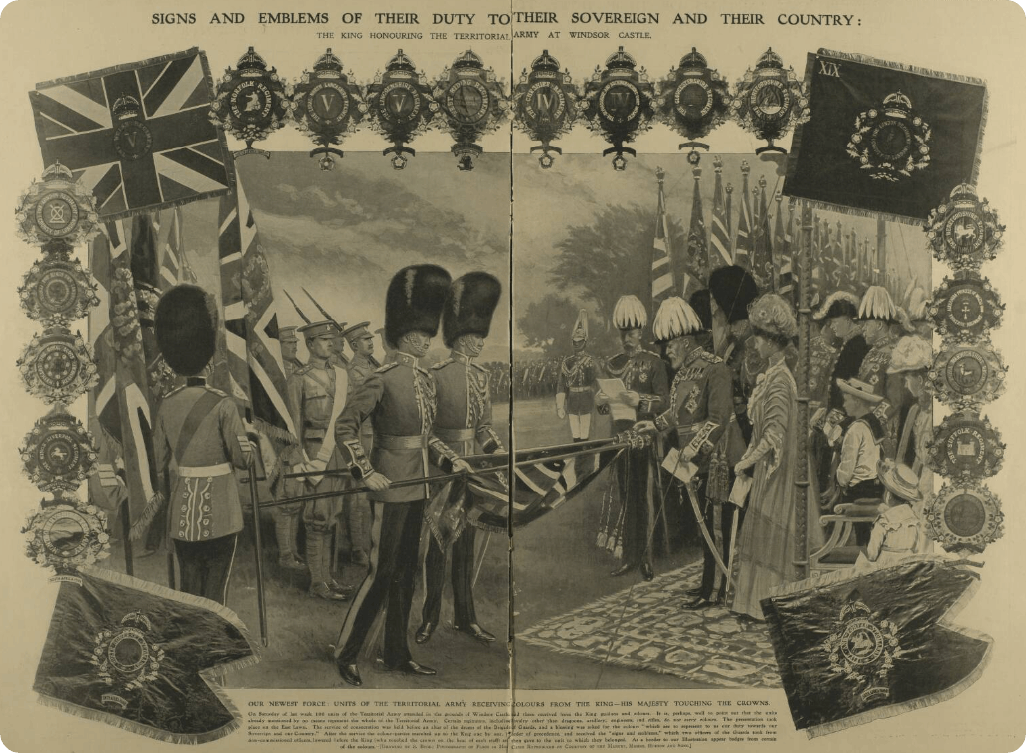
Units from the Territorial Army Forces receiving colours from His Majesty the King, as pictured in the Illustrated London News, 1906.
The 4th, 5th, 6th, and 7th (Territorial Force) Battalions of the Essex Regiment were formerly the 1st, 2nd, 3rd and 4th Volunteer Battalions of the Essex Regiment, whilst the 8th (Cyclist) Battalion, Essex Regiment would be formed in 1912.
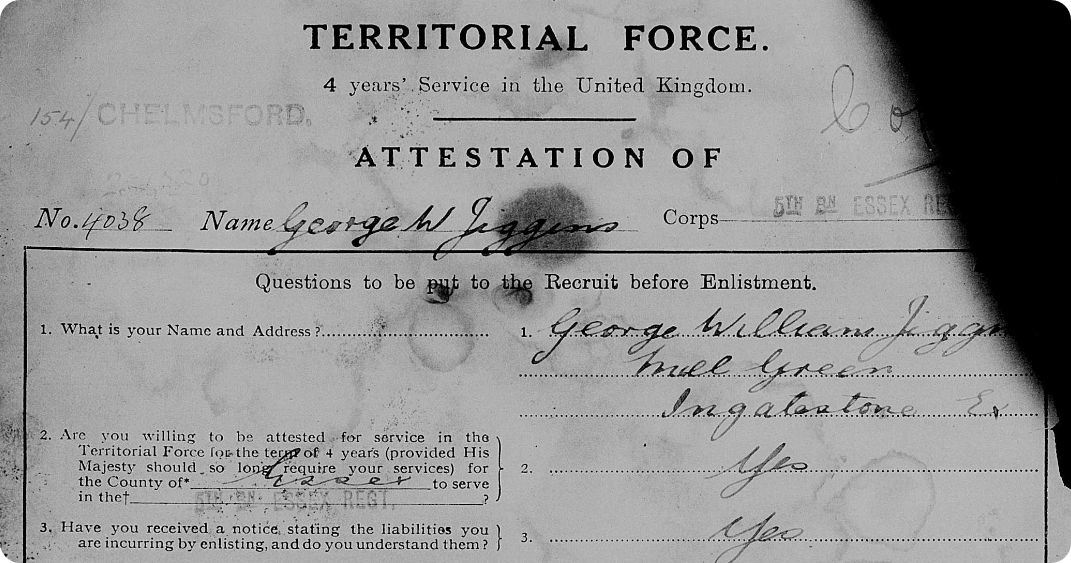
A 1915 Territorial Force attestation from the Essex Regiment. View this record here.
Each Territorial Force battalion had its own regimental number series which was administered by the County Association responsible for that battalion. Indeed, some battalions, usually spread over large parts of rural Wales or Scotland were administered by more than one County Association and therefore operated more than one regimental numbering sequence.
So far then, we have the following regimental number sequences for the Essex Regiment:
- 1st and 2nd Regular Battalion - number sequence 2
- 4th (Territorial Force) Battalion - number sequence 3
- 5th (Territorial Force) Battalion – number sequence 4
- 6th (Territorial Force) Battalion – number sequence 5
- 7th (Territorial Force) Battalion – number sequence 6
Already, with six different regimental number series, and all of these originally starting with the number 1, it is inevitable that there will be duplication within a regiment, let alone within the army generally. By September 1914, for instance, the number 1234 could have been in use by a man in the 3rd, 4th, 5th, 6th and 7th Battalions. The same number would also have been issued to a regular soldier thirty years earlier in January 1884.
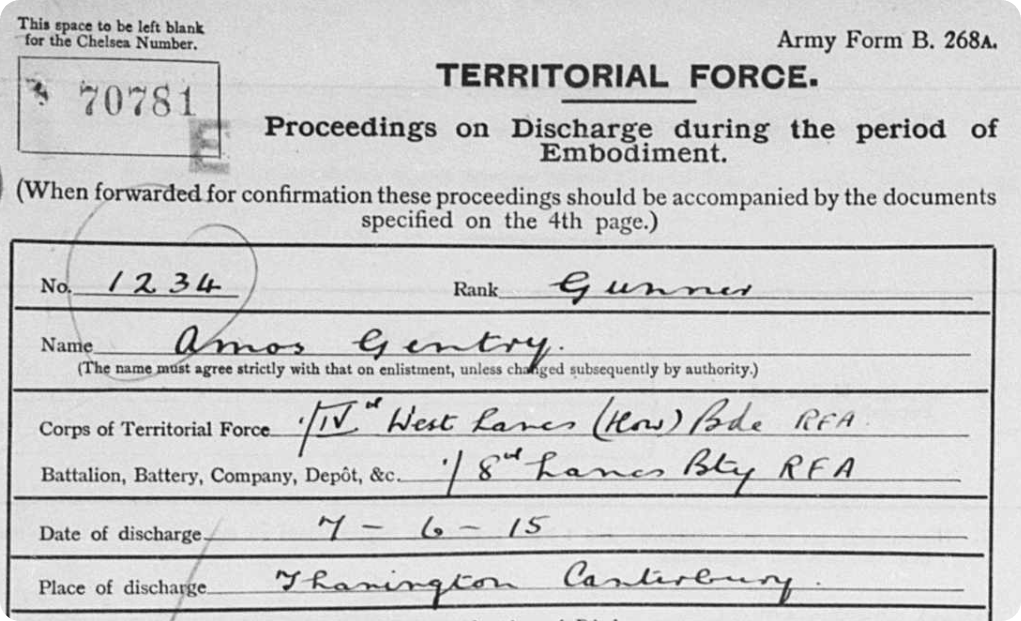
A 1915 Territorial Force record of a gunner with the number 1234. View this record here.
Try testing this theory yourself by simply running a search across our British Army Service Records. When I key in the number 1234 in the regimental number field and run a search, I get 153 results. That's 153 men with the same regimental number, and even that is a just a fraction of the whole.
Type 1235 on a search of Essex Regiment men and there are three results for a man in the 5th Battalion, a man in the 6th Battalion and a man who served in the militia.
Tracing Men During World War 1
When Britain went to war in 1914 and started taking casualties in France and Belgium, drafts of men for the regular battalions were supplied from the 3rd (Special Reserve) and 4th (Extra Reserve) battalions.
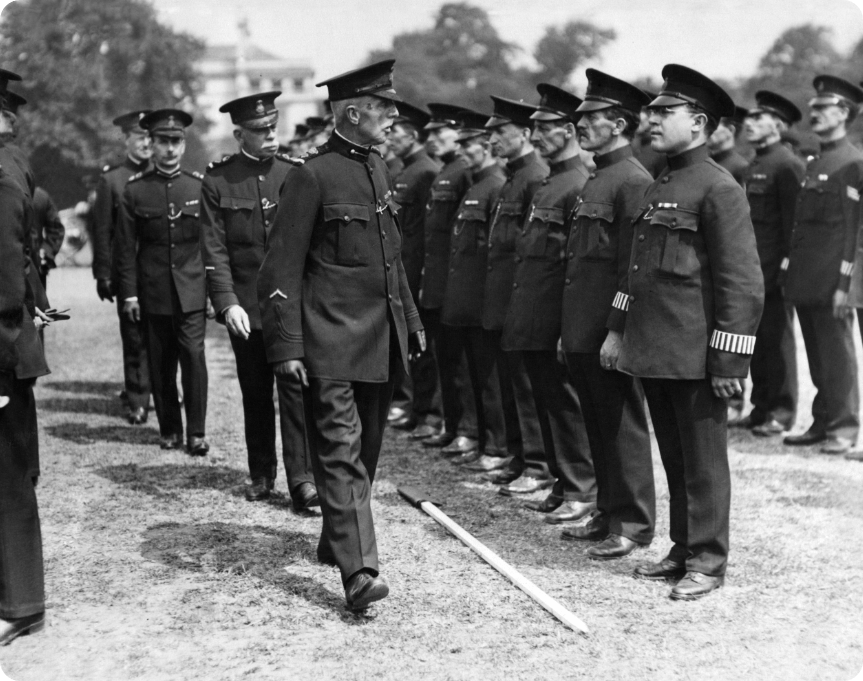
Colonel Reay C B E inspecting the Post Office Special Constabulary Reserves at Kensington Palace., July 1921, found in our Photo Collection.
These men retained their Special Reserve and Extra Reserve Battalion numbers albeit there is often nothing in surviving documentation to distinguish these men's numbers from the numbers of the regular soldiers. Some medal index cards may prefix these SR and ER men's numbers with S/ (for Special Reserve) or 3/ or 4/ (to designate their battalion) but this is by no means a uniform practice.
Regimental Numbers for New Volunteers
Kitchener's call for volunteers to form a New Army presented the army with further conundrums. How should these new volunteers be treated? Should they be given regimental numbers from the same series that was being used by the regulars, even though their terms of enlistment were different, or should they be given numbers from a new series? The answer, ultimately was a bit of both – and with multiple variations.

A newspaper call-out for Colonel Kitchener's new volunteer army, Westminster Gazette, 1914.
Furthermore, if a man was transferred from one regiment to another, he was given a new regimental number, and this could also happen if he was posted between battalions in the same regiment.
The long and the short of it then, is that regimental numbers were far from unique in a regiment, let alone the British Army. However, understanding how regimental numbering worked can in turn lead you to the correct battalion, or unit, that a man served with.
If this has inspired you to learn more, then check out Paul Nixon's top 5 books on the British Army during World War 1. Who knows? You might even find a name you recognise in one of them.
Related articles recommended for you
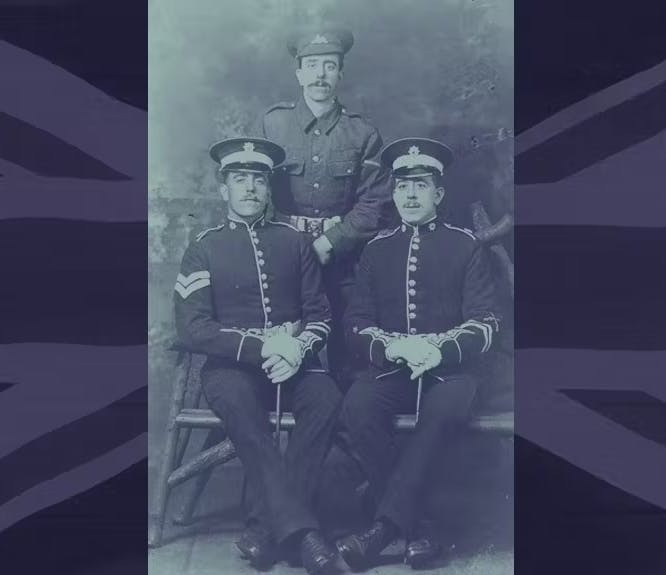
Five must-read books to discover more about the British Army during the First World War
History Hub
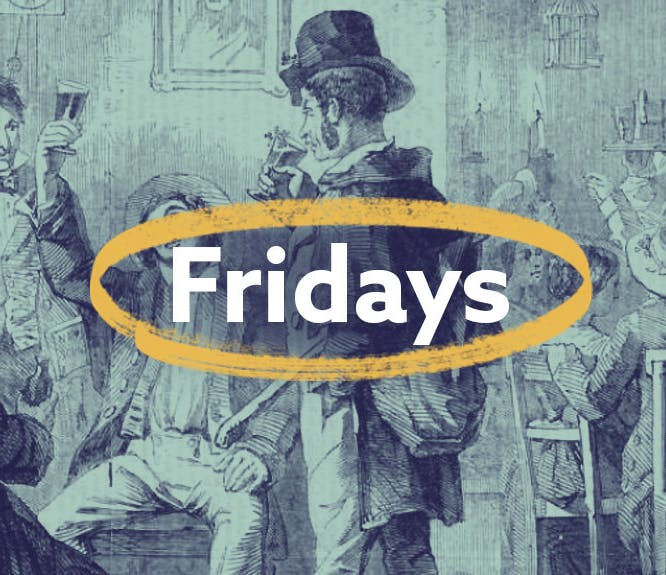
Celebrating Irish stories with almost a million new records
What's New?
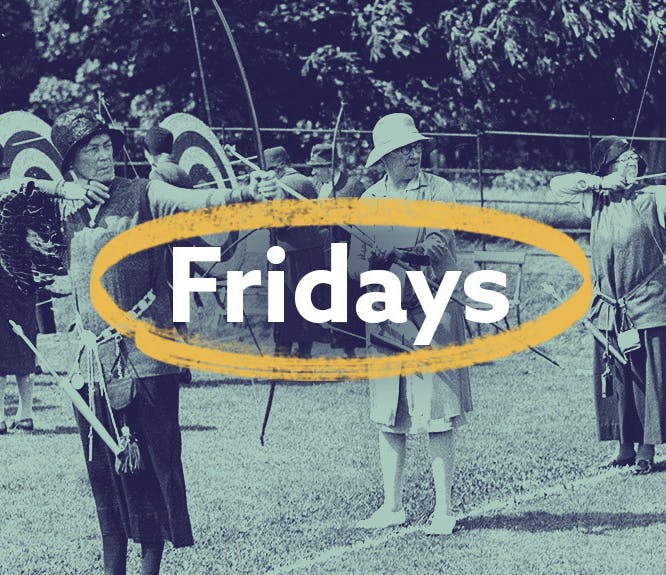
Celebrating International Women's Day with women's wartime records
What's New?
